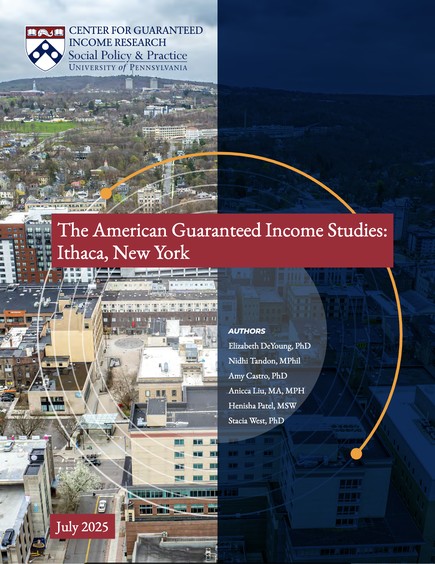Ithaca Guaranteed Income (IGI)
Ithaca Guaranteed Income (IGI) was launched in 2022 by Mayor Svante Myrick.
110
participants
$450
monthly payment
1 Year
duration
$594,000
invested in community
Ithaca Guaranteed Income (IGI) was launched in 2022 by Mayor Svante Myrick.
110
participants
$450
monthly payment
1 Year
duration
$594,000
invested in community
| Program Features | |
|---|---|
| Number of Participants | 110 individuals |
| Amount | $450 |
| Frequency | monthly |
| Program Dates | June 2022-May 2023 |
| Eligibility | Primary unpaid caregivers to children and aging or disabled adults that reside in Ithaca and have an income at or below 80% Area Median Income. |
Even before COVID-19, income and wealth inequality were at historic highs and many people who were working multiple jobs couldn’t afford basic necessities. Ithaca Guaranteed Income (IGI) is a research pilot that asks the question: how does a guaranteed income effect the housing stability and overall wellness of our city's care-givers. Cash is the currency of urgency, and guaranteed income works more effectively when it’s direct and unconditional. Research tells us that recipients of direct cash assistance overwhelmingly use money on their basic needs: housing, utilities, food, and unexpected medical expenses or other financial emergencies that can undermine their health and well-being. People can be trusted to make their own financial choices. (Photo credit: Christian Phillips, courtesy of Sasaki)
Pilot concluded in 2023.
$44,797
$38,000
21.2%
20%
37.3%
31%
31.2%
40%
8.5%
8%
STOCKTON
STATE MEDIAN

Read a research report produced by the Center for Guaranteed Income Research (CGIR) which offers summaries of key findings, along with in-depth analyses of both quantitative and qualitative data from this pilot.
download the report
The guaranteed income pilot launched during a period of dynamic change and economic challenges for pilot participants. The chart below situates this pilot in the context of unemployment and inflation.
The data in this pie chart shows aggregate spending for guaranteed income false participants in Ithaca, NY. This includes all non-cash expenditures from the participants' pre-paid debit card that is loaded with guaranteed income payments monthly.
Spending breakdown
Food and groceries accounted for the largest share of spending, at 38.45%, followed by Retail sales and services (25.03%) and Financial transactions (14.91%).